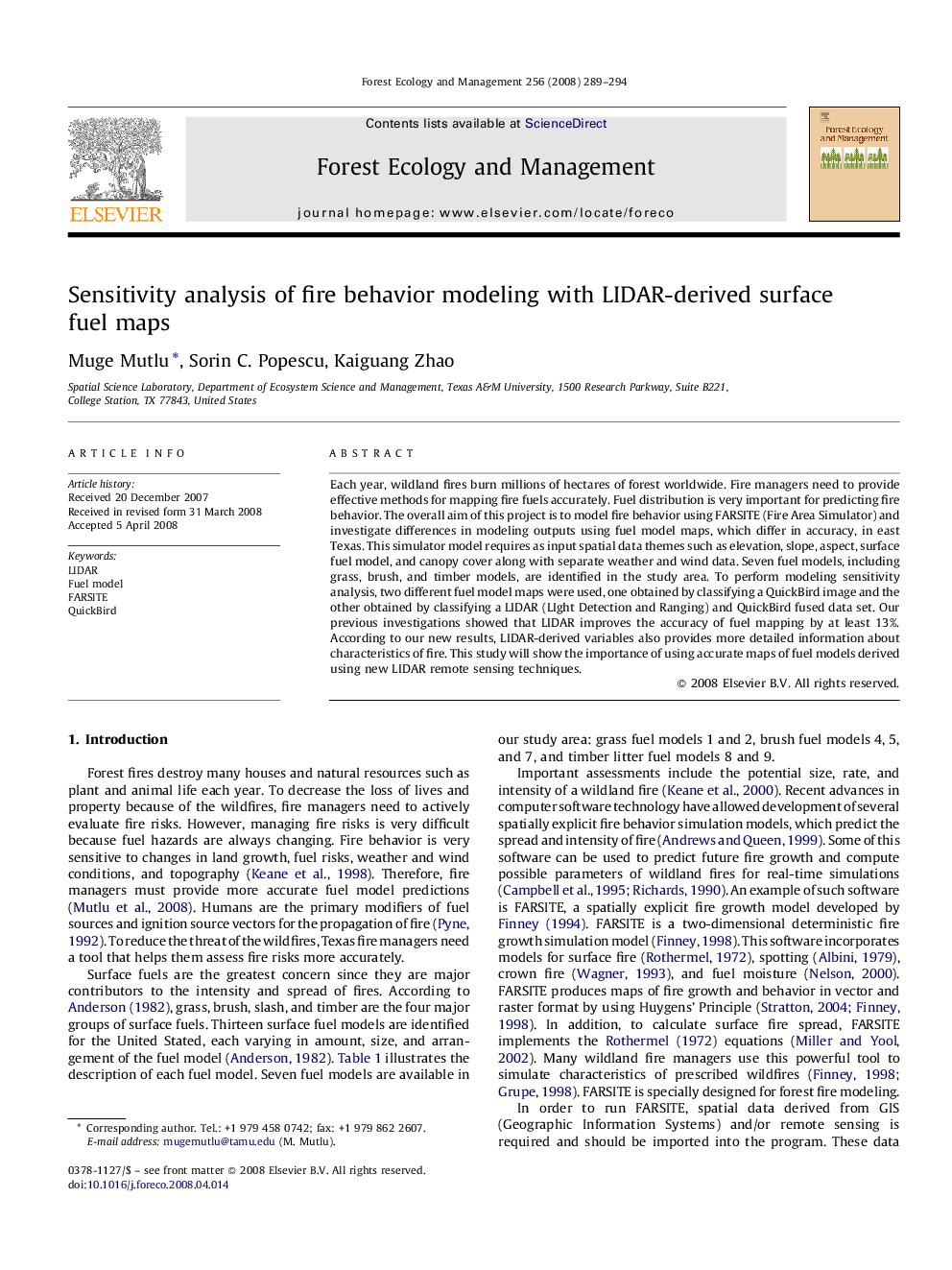| Article ID | Journal | Published Year | Pages | File Type |
|---|---|---|---|---|
| 88887 | Forest Ecology and Management | 2008 | 6 Pages |
Each year, wildland fires burn millions of hectares of forest worldwide. Fire managers need to provide effective methods for mapping fire fuels accurately. Fuel distribution is very important for predicting fire behavior. The overall aim of this project is to model fire behavior using FARSITE (Fire Area Simulator) and investigate differences in modeling outputs using fuel model maps, which differ in accuracy, in east Texas. This simulator model requires as input spatial data themes such as elevation, slope, aspect, surface fuel model, and canopy cover along with separate weather and wind data. Seven fuel models, including grass, brush, and timber models, are identified in the study area. To perform modeling sensitivity analysis, two different fuel model maps were used, one obtained by classifying a QuickBird image and the other obtained by classifying a LIDAR (LIght Detection and Ranging) and QuickBird fused data set. Our previous investigations showed that LIDAR improves the accuracy of fuel mapping by at least 13%. According to our new results, LIDAR-derived variables also provides more detailed information about characteristics of fire. This study will show the importance of using accurate maps of fuel models derived using new LIDAR remote sensing techniques.
